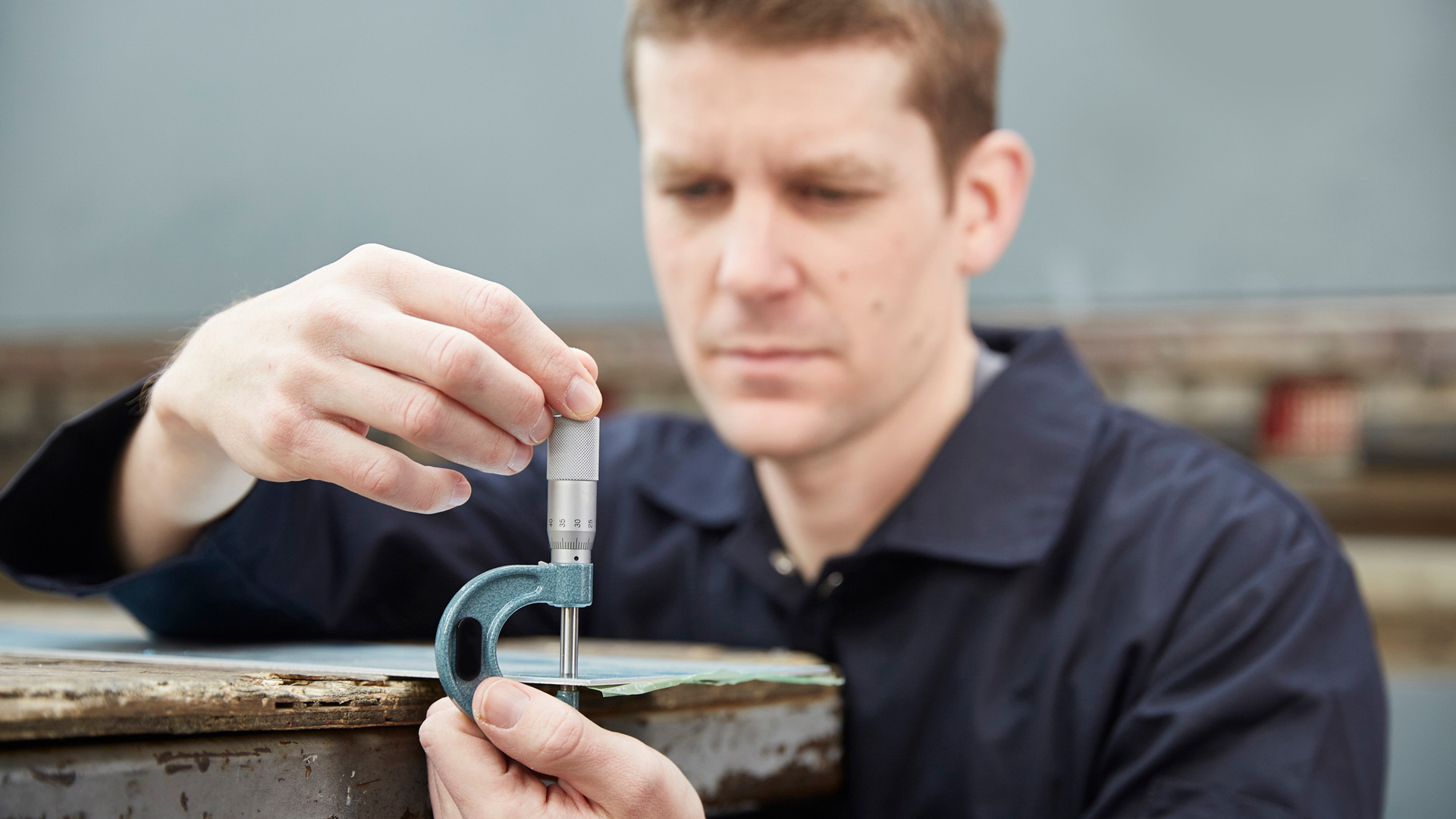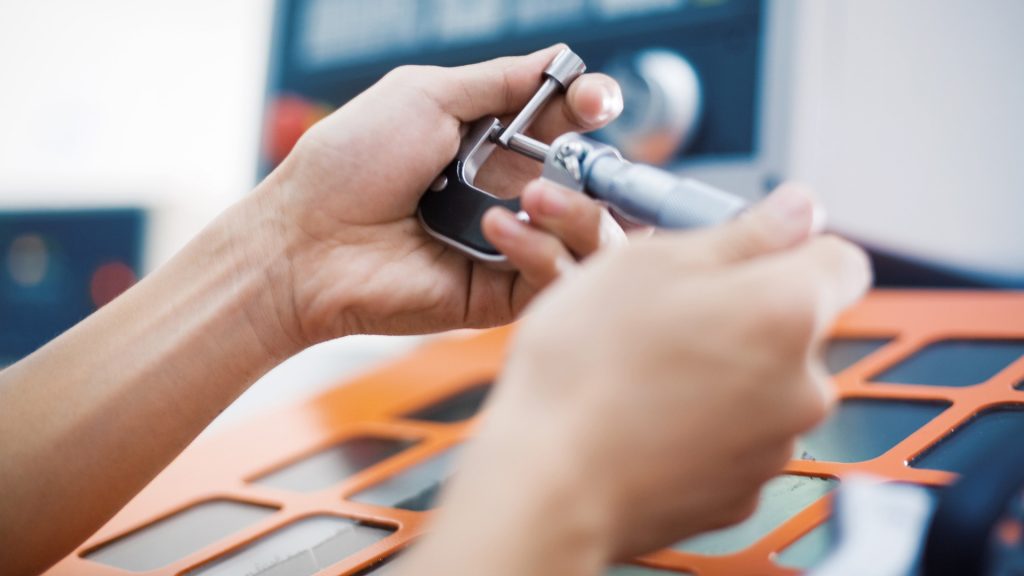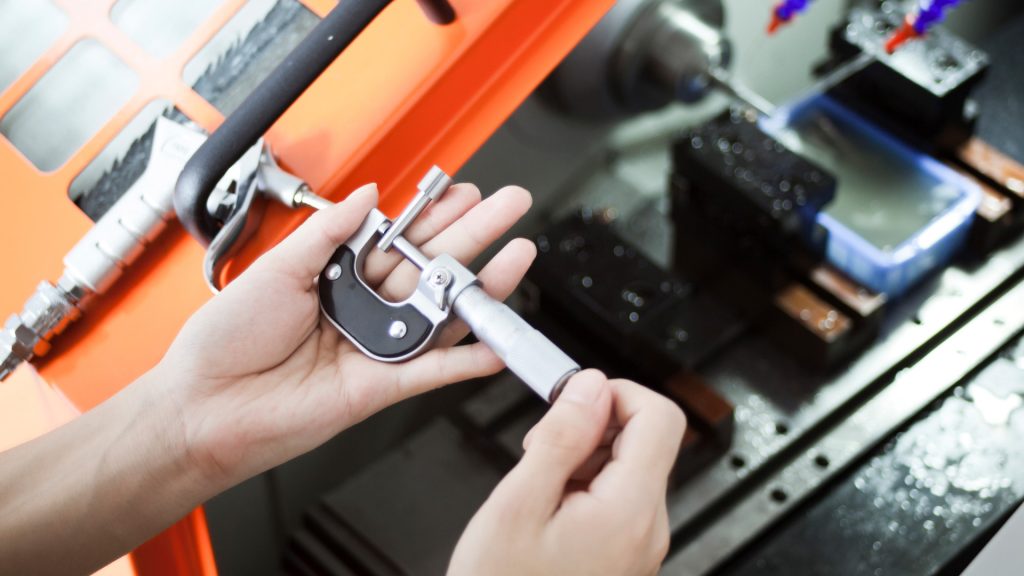3rd December 2020

What Is a Micrometer?
A micrometer is a precise measuring tool used by machinists, engineers and other technicians to take extremely accurate and fine measurements. Micrometers are preferred over other precision measuring tools such as dial micrometer calipers, vernier calipers and digital calipers because they’re much more accurate, enabling pinpoint precision. Micrometers come in a variety of types, sizes, and measuring ranges, so it’s essential to do your research before buying one.
In this article, we describe what a micrometer is, how to use one and why investing in a high-quality micrometer is a wise move.
How does a micrometer work?
Mechanical micrometers have a calibrated screw, or thread that converts distances into measurements. There are various types of micrometer (which we explore below), but all are mechanically adjusted around a workpiece, or inside it, to provide an accurate measurement of distance.
For example, using a typical outside micrometer to measure the thickness of an object, you clasp a workpiece between the anvil and turn the thimble to move the spindle until it comes into contact with the workpiece. Once the piece is held in place, you can take your measurement from the micrometer sleeve.

How to read a micrometer
To read a mechanically operated micrometer, ensure the micrometer is either clasping the piece between the screw (or in the case of an internal micrometer, both sides are in contact with the internal walls of the piece). You then need to take two measurements from the screw gauges and add them together:
- Take the measure from the main scale on the sleeve (provided in mm).
- Take the measurement from the rotating vernier scale on the thimble.
For example, the sleeve measures 2.2mm and the datum line on the sleeve measures 0.25mm. Now, by adding them together you get an accurate reading of 2.75mm.
Digital micrometers such as the Moore & Wright Workshop Digital Micrometer 200 Series work in a similar way, but rather than having to read from the sleeve, you get a reading from the digital gauge.
The principle of operation is simple, but the benefits are in its accuracy, which is crucial for mechanical engineering. Vernier scale markings on our smallest Mitutoyo Outside Micrometer allow highly accurate measurements to be taken to within .001mm degrees. This level of accuracy is essential when working with precision machines, components and processes.
Micrometers will either provide metric or imperial measurements. If you need both imperial measurements, digital micrometers can provide both at the flick of a switch.
Types of micrometer
At R.D. Barrett, we stock a range of exceptional quality micrometers that deliver precision measurements for machinists, engineers and technical experts. Here are some of the different types of micrometer we have in stock.
- Bore micrometer – Bore micrometers, such as the Bowers XT Bore Micrometer Set, provide dimensional measurement or assessment of the internal diameter of components. Bowers XT Bore Metric sets range in sizes from 10mm to 100mm.
- Outside micrometer – Outside micrometers such as the Mitutoyo Outside Micrometer, have a C-shaped body that slides around the piece. Sizes range from the 0-125mm. If you’re looking for multiple measuring tools, the Moore & Wright Outside Micrometers Boxed Sets 215 Series is a cost-effective way to purchase various outside micrometers.
- Inside micrometer – Instead of moving around a piece to clamp it, the jaws on inside micrometers such as the Linear Large Range Inside Micrometer move outwards until they make contact with the piece, providing an accurate measurement of the internal diameter.
- Depth micrometer – Like a tyre-tread guide (but much more accurate), depth micrometers such as the Mitutoyo Depth Micrometer 0-25mm, 63mm Base extend into a gap, providing a depth measurement. We also stock the Mitutoyo Digital Depth Micrometer 0-6″, Digimatic MM & Imperial, which provides an accurate digital measurement.
Taking care of your micrometer
Micrometers are highly accurate, precision engineering tools and they should be cared for. If looked after properly, your micrometer should provide years of faithful service. If you fail to care for it properly could lead to costly errors in machining and the unnecessary expense of buying a replacement.
You should ensure your micrometer always remains protected in its case when not in use. It should be used with care and treated with respect. It should be regularly cleaned, including being wiped down with a cloth after every use.

Do I need to calibrate my micrometer?
You should regularly gauge the accuracy of your micrometer to ensure its readings are trustworthy. To assess whether your micrometer needs calibrating or not, you should use guide blocks, where the dimensions are already known. Micrometer tests should be conducted at room temperature and in controlled conditions.
Given the precision requirements, if your micrometer reading is inaccurate, it will need to be recalibrated. We won’t go into that process here, but it can be performed by an experienced engineer or returned to the manufacturer for recalibration.
Buying a micrometer
When purchasing a micrometer, here are a few considerations:
- Size of the piece to be measured – how large is it? Will the micrometer fit?
- How accurate is the micrometer – does the micrometer provide the level of accuracy you require?
- Is the micrometer calibrated? – Will the micrometer come ready to use or will it require calibration?
- Do you need more than one micrometer? – Buying a set of micrometres may be cheaper in the long run than investing in individual tools.
At R.D. Barrett, we’ve been helping engineers select the best tools for the job for over 40 years. If you’d like any advice on micrometers, or other precision measuring tools, then get in touch with us today. We’re able to advise on the most suitable micrometer, or other measuring or machine tools to help you get the job done. If you need a special component, tool or part but can’t find it online, then give us a call.
